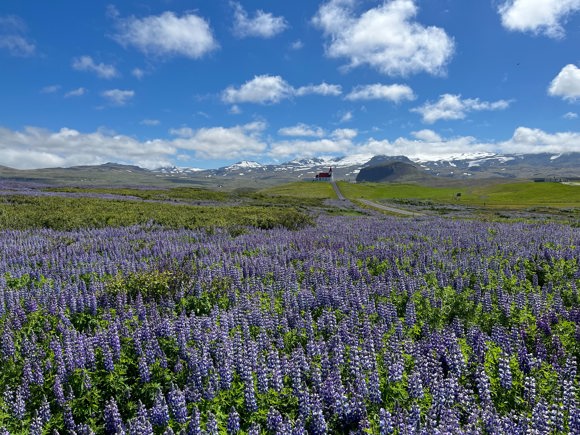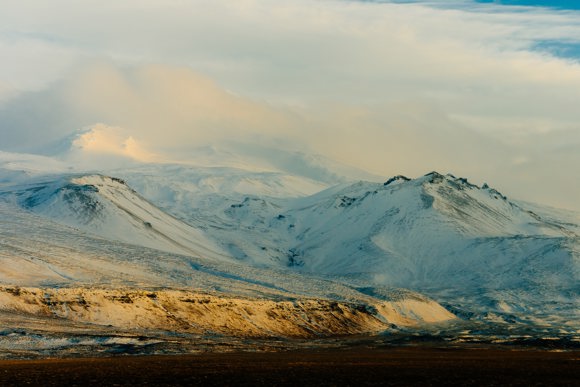Complete Guide to Snæfellsjökull National Park

One of the 3 national parks in the country, Snæfellsjökull National Park, is perhaps the most accessible from the country’s capital. While neither the oldest nor the largest in the country, you shouldn’t count Snæfellsjökull out by any means. You’ll find rolling landscapes scattered with unforgettable natural attractions and rugged scenery. The park is named after the Snæfellsjökull glacier which stands overseeing the area alongside a number of other tall peaks.
Notable Features of the National Park
With such a big area to cover, you might want to know the biggest and best natural features of the park. Let’s take a look at the most obvious landmarks in Snæfellsjökull National Park.
· Snæfellsjökull Volcano: This volcano sits beneath the Snæfellsjökull glacier and makes for a stunning spot for hikers and ice-climbers.
· Buðahraun Lava Field: The peculiar sandy lava fields of Buðahraun are located on the southernmost point of the national park and are home to the infamous black church and Budaklettur crater.
· Djúpalónssandur Beach: Known as black lava pearl beach, stunning lava formations from ancient eruptions litter the surroundings, making for an incredible backdrop.
Wildlife in Snæfellsjökull National Park
While you might imagine national parks to be full of large animals, Snæfellsjökull National Park has only a few notable creatures and plants to be aware of. In particular, due to its coastline, seabirds are common in the park. The famous arctic tern is in fact the symbol of the Snæfellsbær municipality.
The entire length of the area’s coastline plays host to a range of seabirds making their nests. Birds found here include the Arctic Tern, razorbill, fulmar, shag and many more. Þúfubjarg and Saxhólsbjarg are two of the best cliffs to frequent if you are an avid bird-watcher with plenty of species commonly spotted here.
As in the rest of the country, moss is among the most common types of vegetation in the Snæfellsjökull park. In fact, Búðahraun lava field is renowned for the rare types of plants and moss found here. It is for this reason the area is protected, so be careful where you step when exploring the national park.
The reason for such rare species lies in the area’s geography. Lava fields are typically rife with mosses, but this area has lava fields that are bedded in seawater. This combination creates some unique conditions for life, taken advantage of by ferns, mosses, and lichens.
Geology of the National Park
The Snæfellsnes peninsula contains rocks from almost every geological period of Icelandic history. The glacial period of the ice age had a large influence on the area, and most rock formations in the park are a result of this or more modern times.
Lava fields are also prevalent in the area, which may be expected due to the proximity of the area to the Snæfellsjökull volcano and ice cap. The Búðahraun lava field is one of the most famous among geologists for its triple-flecked lava rock.

Things to Do in Snæfellsjökull National Park
The national park is home to so many natural wonders that it’s any adventurer’s dream. Explore by foot on some incredible hiking trails, or simply drive through the park as part of your road trip through the country. It’s important to protect the national park as best as possible, which means keeping to paths, not littering, and keeping animals on leads. Fantastic activities in the area include:
-
Horse riding: Venturing through the landscape by horseback is a great way to take in your surroundings at a slower pace while also investing in local farms and getting to know a real Icelandic horse.
-
Glacier walking: The Snæfellsjökull glacier is the star of the surrounding national park. Hiking across the glacier is a popular activity for active visitors to the region.
-
Bird watching: The cliff sides in the national park see countless species of birdlife nesting at certain times of the year, making it the perfect stop for avid birdwatchers. Bird species include fulmar, guillemot, kittiwake, razorbill, and shag.

Snæfellsjökull National Park Visitor Centre
There is no entrance fee for the park so you are free to explore to your heart’s content as long as you respect your surroundings! Snæfellsjökull National Park Visitor Centre is located at Malarrif and is an excellent resource if you’re unsure where to start. Park rangers are on hand to provide advice for hikes of all fitness levels and there is a great exhibition outlining the area's natural features.
Should I Visit Snæfellsjökull in Winter?
During Iceland’s winter, temperatures drop and landscapes become even more dramatic. Blankets of snow, frozen rivers, and overcast skies make for a monochrome wonderland, particularly in Snæfellsjökull National Park. If you visit the park during the winter months, you’ll be able to spot:
-
Partially frozen waterfalls
-
Lava formations
-
Glacier-carved mountains
-
Stunning volcanic craters
Where to Stay Near Snæfellsjökull National Park
With so much to do and see, you might wish to stay within the Snaefellsnes peninsula to make the most of the park and all it has to offer. Situated in the stunning fishing village of Stykkishólmur, Fosshotel Stykkishólmur makes for a comfortable and convenient base for more adventurous visitors to Iceland. You can enjoy local attractions as well as free use of the Víkurvellir golf course during your stay!